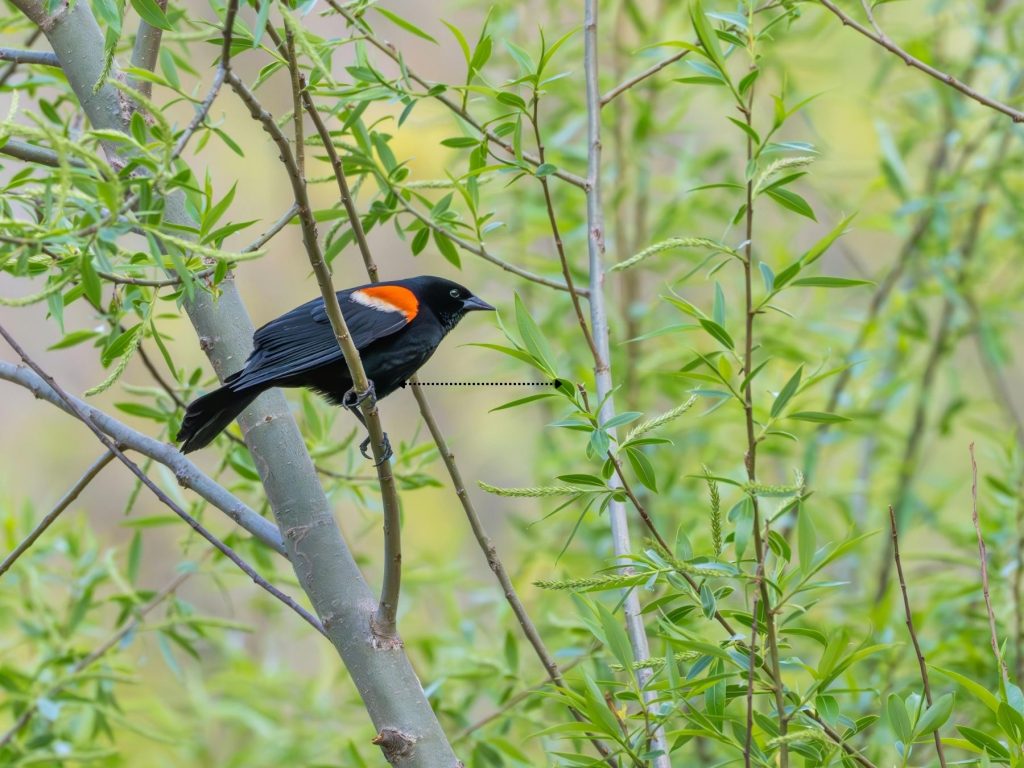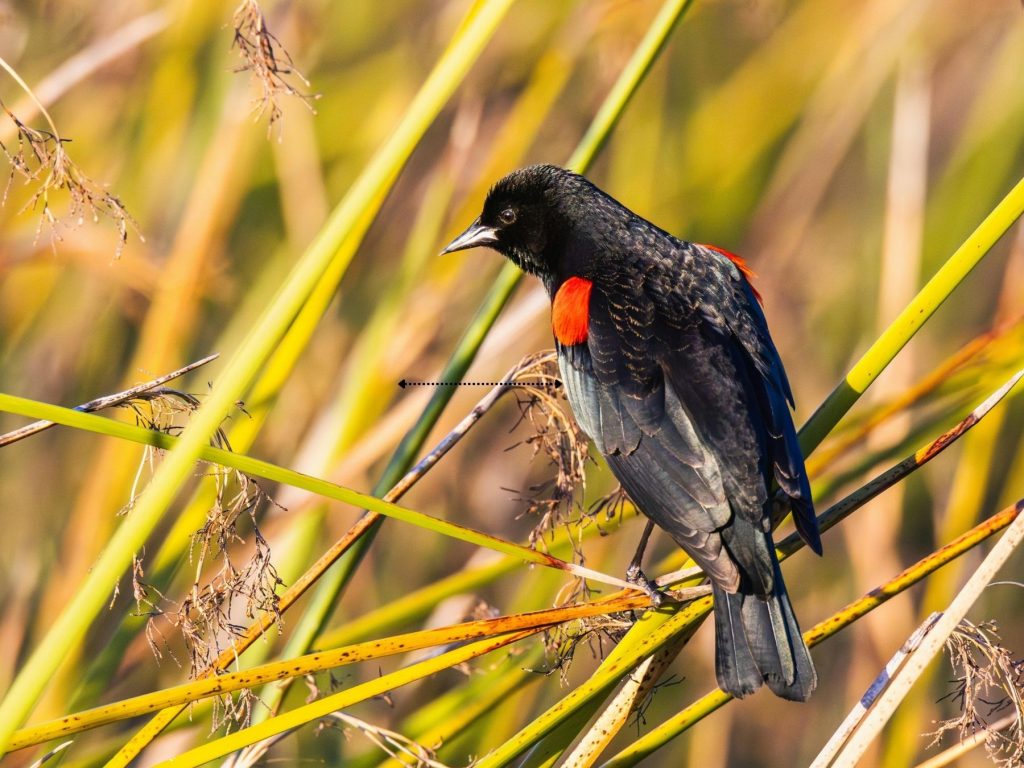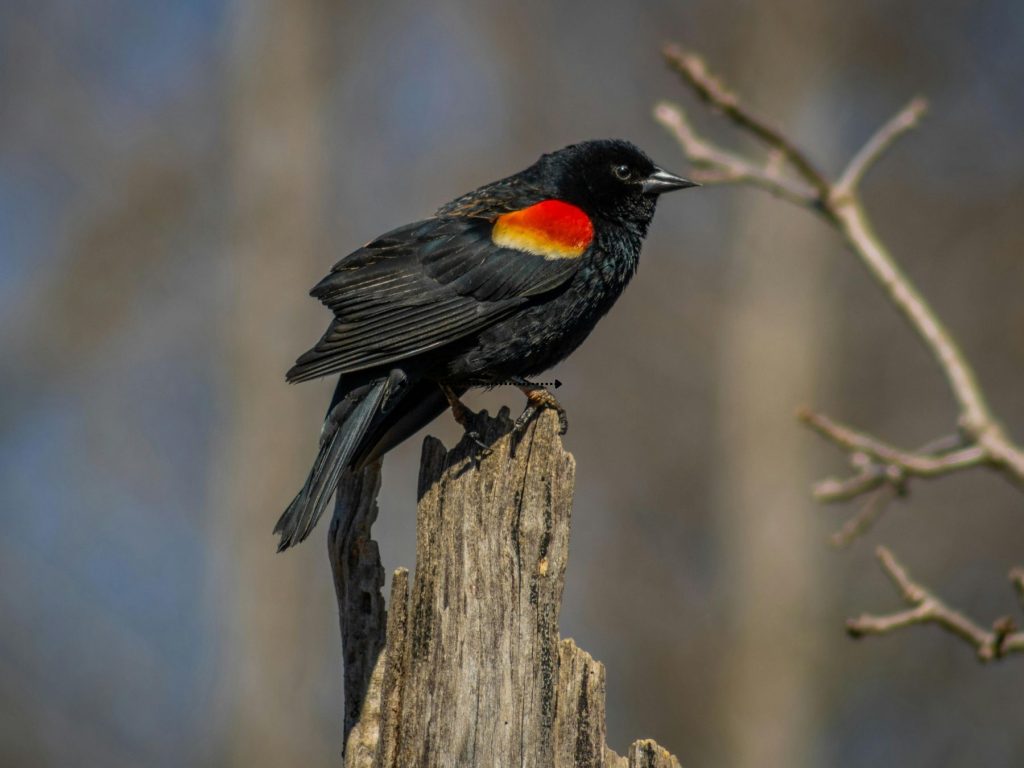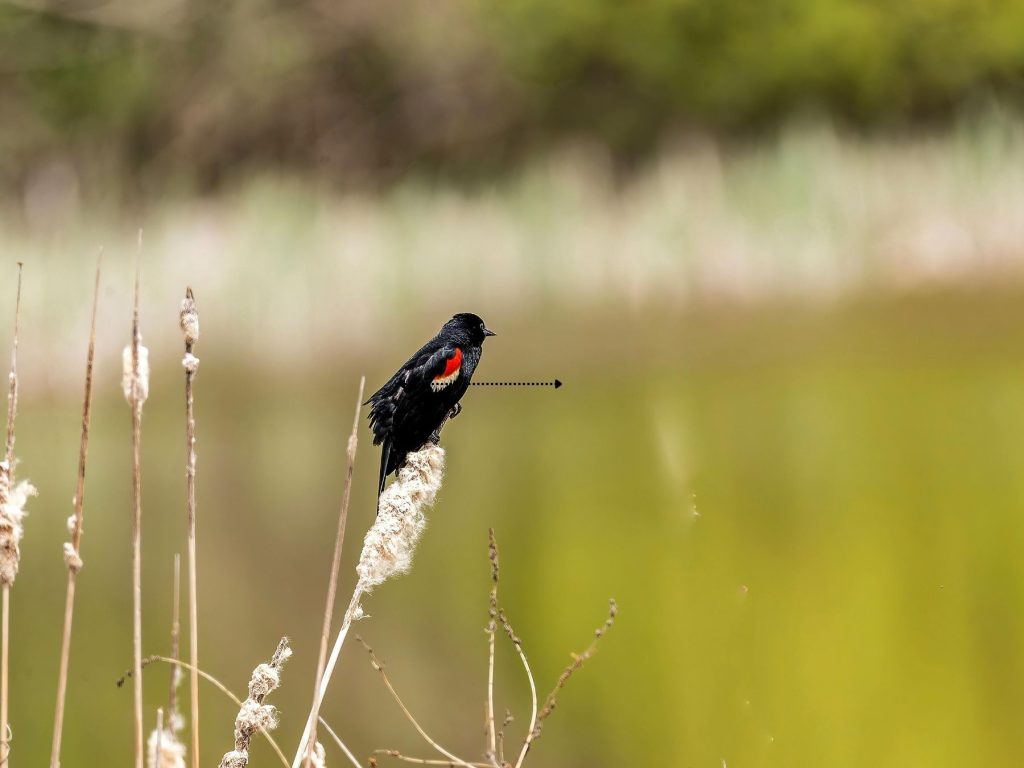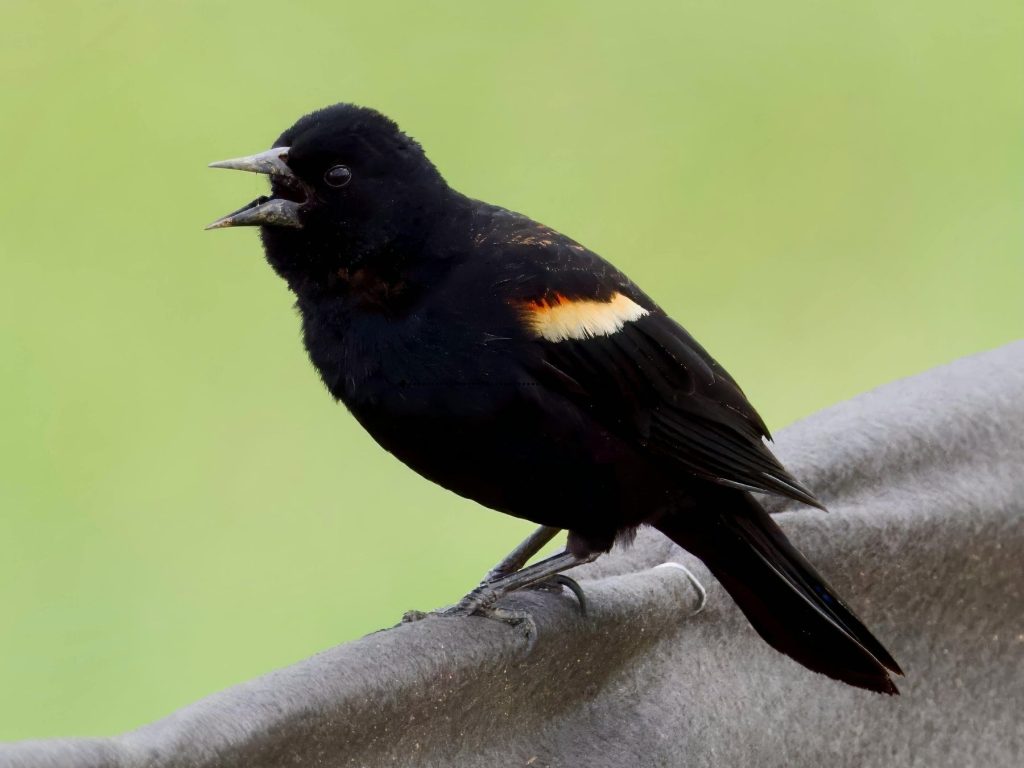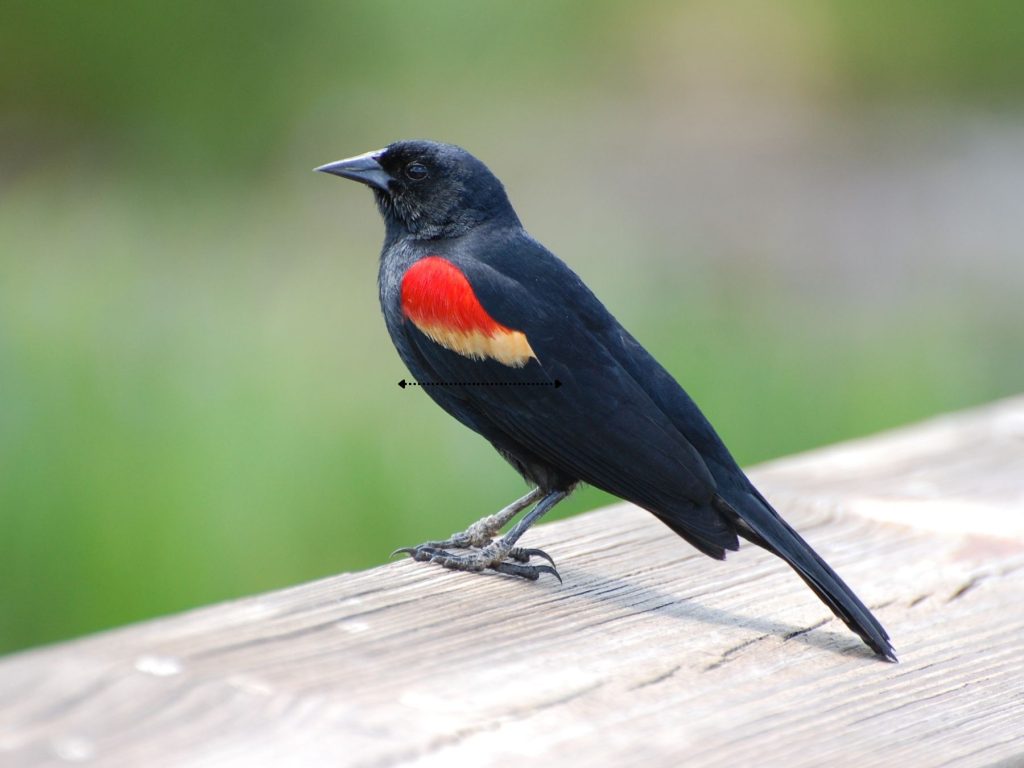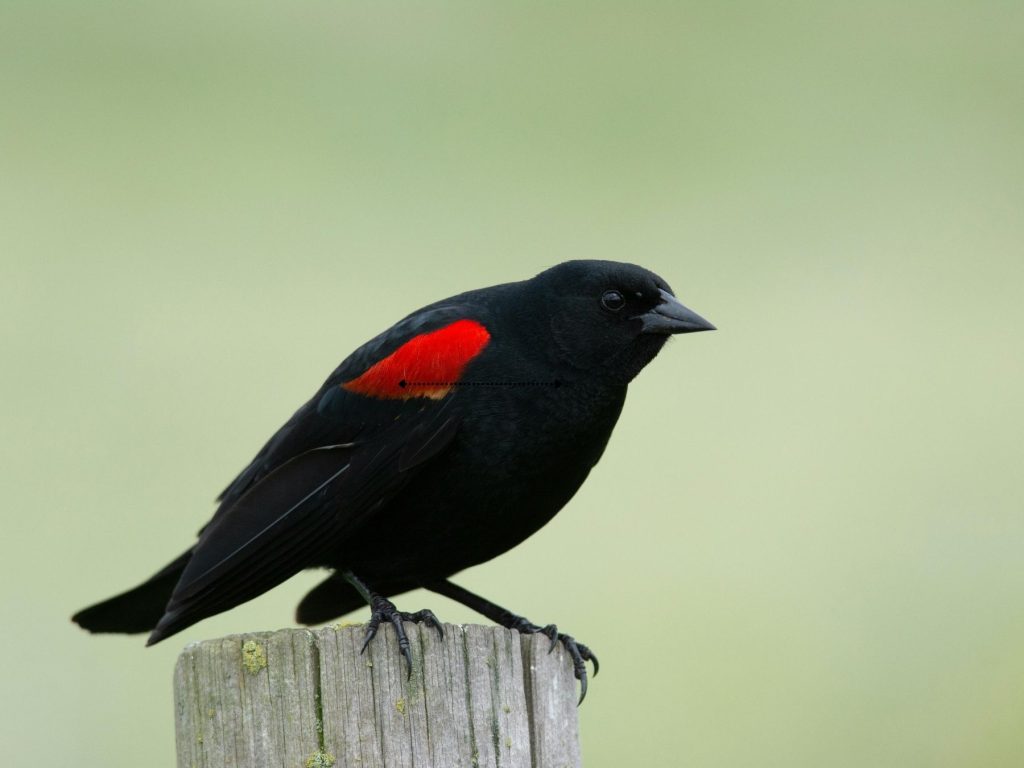Visual identification
The Red-winged Blackbird is a common and colorful bird you’ve probably seen before. Look for them perched on tall grasses, near ponds, or even on power lines.
The Size of Red-winged Blackbird
Appearance
Male Red-winged Blackbirds are easy to recognize—sleek and shiny black with bright red-and-yellow shoulder patches.
Females, on the other hand, wear a more subtle look: streaky brown feathers, a lighter chest, and sometimes a pale eyebrow stripe.
bird attributes
bird attributes system rates various aspects of a bird’s capabilities on a scale of 0-100, based on data from field observations, scientific studies, and expert knowledge.
Attribute Categories:
Agility: Maneuverability, speed, and grace in flight or movement.
Strength: Physical power, often correlating with size and hunting abilities.
Adaptability: Ability to thrive in various environments or changing conditions.
Aggressiveness: Territorial behavior and assertiveness, particularly during breeding seasons.
Endurance: Stamina, often seen in migration patterns or foraging behaviors.
Understanding the Ratings:
0-20: Very Low
21-40: Low
41-60: Average
61-80: High
81-100: Very High
Habitat and Distribution
Where to Spot Red-winged Blackbirds:
These striking birds love wetlands—look for them in marshes (both fresh and saltwater), along streams, and even in soggy roadside ditches. They also visit golf course ponds, meadows, and overgrown fields.
Come winter, many head south to warmer areas, gathering in farm fields, pastures, and feedlots. But some stay put year-round if they find enough food and open water.
Home Sweet Habitat:
From Alaska to Florida, Red-winged Blackbirds thrive across North America. They’re most at home in wetlands but adapt easily to other open areas. While northern flocks migrate south for winter, you can find them in much of the U.S. and southern Canada any time of year—just follow their cheerful conk-la-ree! calls.
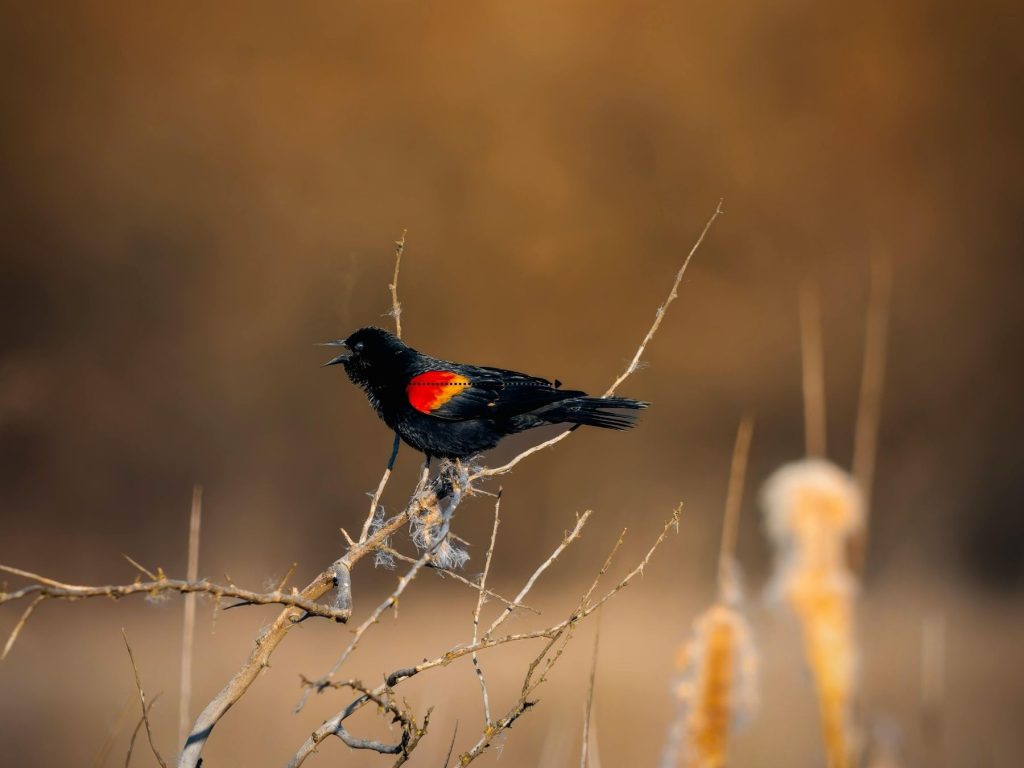
Behavior of Red-winged Blackbirds
These birds love company! Outside of breeding season, they gather in big, chatty flocks. But when it’s time to nest, the males turn into proud performers—perching high, puffing up their bright red shoulder patches, and belting out their classic “conk-la-ree!” call to defend their turf.
Meanwhile, females stay busy on the down-low, quietly hunting for insects and seeds in the grass while crafting their intricate nests.
Come winter, Red-winged Blackbirds mix into massive flocks with other blackbirds and starlings, feasting on grains in fields and farmlands. Whether showing off or blending in, these birds know how to make an impression!
A Red-Winged Blackbird’s Diet: Seasonal Snacking
These adaptable birds change their diet with the seasons! In spring and summer, they feast on protein-packed insects, spiders, and other small critters—perfect fuel for breeding season.
When cooler weather arrives, they switch to a seed-based diet. They’ll munch on grasses, weeds like ragweed and cocklebur, and even leftover corn and wheat from farm fields.
Clever Foragers:
Watch closely and you might spot them using their slender bills like tweezers—prying open aquatic plants to uncover hidden insects or probing the ground for seeds. Whether it’s summer bugs or winter grains, Red-winged Blackbirds always find a good meal!
The Red-Winged Blackbird’s Nesting Secrets
Red-winged Blackbirds are expert architects, crafting their nests in dense thickets of marsh plants, shrubs, or even farm fields. The female selects the perfect spot—usually low to the ground (or water in wetlands)—with a little advice from her mate. She favors sturdy, upright stems in places like:
- Wetlands: Cattails, bulrushes, sedges, and reeds
- Uplands: Goldenrod, blackberry bushes, willow, and alder trees
- Farm Fields: Wheat, barley, alfalfa, and rice stalks
A Feminine Touch: How the Nest Takes Shape
Using incredible skill, the female weaves the nest in layers:
- The Foundation: She wraps stringy plants around upright stems to create a sturdy base.
- The Framework: Wet leaves, decayed wood, and mud form a cup-like structure.
- The Finishing Touches: Soft, dry grasses line the interior for comfort.
One 1930s naturalist dissected a nest and found it contained 34 strips of willow bark and 142 cattail leaves—some two feet long! The final product? A snug, waterproof home measuring 4–7 inches wide and 3–7 inches deep—just right for raising the next generation.
Talk about a bird with serious construction skills! 🏗️
Nesting Facts
Cool facts about the Red-Winged Blackbirds
Size & Surprising Adaptability
Not all Red-winged Blackbirds are created equal—populations vary in size and shape across their range. But here’s the twist: when scientists moved chicks between different groups, the young birds grew up to match their foster families! This suggests environment plays a bigger role than genes in their physical differences.
Love (and Drama) in the Marsh
These birds are the ultimate players. Males often juggle multiple mates—some keeping up to 15 females in their territory. But paternity tests (well, bird-style) reveal a scandal: 25–50% of chicks aren’t actually the territorial male’s!
Tiny Birds, Big Attitudes
Don’t let their size fool you—male Red-wingeds are fearless defenders. They spend over a quarter of their day chasing rivals and dive-bombing threats, even taking on horses and humans to protect their turf.
Winter Roommates & Epic Commutes
Year-round, these social birds roost together. Summer groups stay small in wetlands, but winter flocks can swell to millions, mixing with other blackbirds and starlings. Their daily routine? Fly up to 50 miles to feed at dawn, then regroup at dusk.
West Coast Rebels: The “Bicolored” Blackbird
One California subspecies ditches the yellow accents on its red shoulder patches, earning it the nickname “bicolored blackbird.” Scientists think this unique look helps avoid mix-ups with the similar Tricolored Blackbird where their ranges overlap.
Record-Breaking Longevity
The reigning champ? A 15-year, 9-month-old Red-winged Blackbird, banded in New Jersey in 1967 and found (and released!) in Michigan in 1983—proving these birds are as tough as they are flashy.
The Lifespan of Red-Winged Blackbirds
These charismatic birds may be common sights in marshes and meadows, but life isn’t easy for a red-winged blackbird.
On average, they live just over 2 years in the wild—a testament to the challenges of predators, harsh weather, and territorial battles.
Yet some beat the odds spectacularly. The current record holder—a true avian senior citizen—lived an astonishing 15 years and 9 months!
Banded in New Jersey in 1967, this tough survivor was still going strong when recaptured (and released) in Michigan 16 years later.
This huge gap between average and maximum lifespan shows how perilous—but potentially long—a blackbird’s life can be. Most succumb young, but a lucky few become wily veterans of the wetlands.
References
- website: BirdLife International. 2018. Agelaius phoeniceus. The IUCN Red List of Threatened Species 2018: e.T22724191A132027891.View source
- report, 2007: Breeding Bird Survey and/or Christmas Bird Count: Butcher and Niven
- website, 2022: Partners in FlightView source
- website: Longevity Records Of North American Birds. Version 2023.1View source

